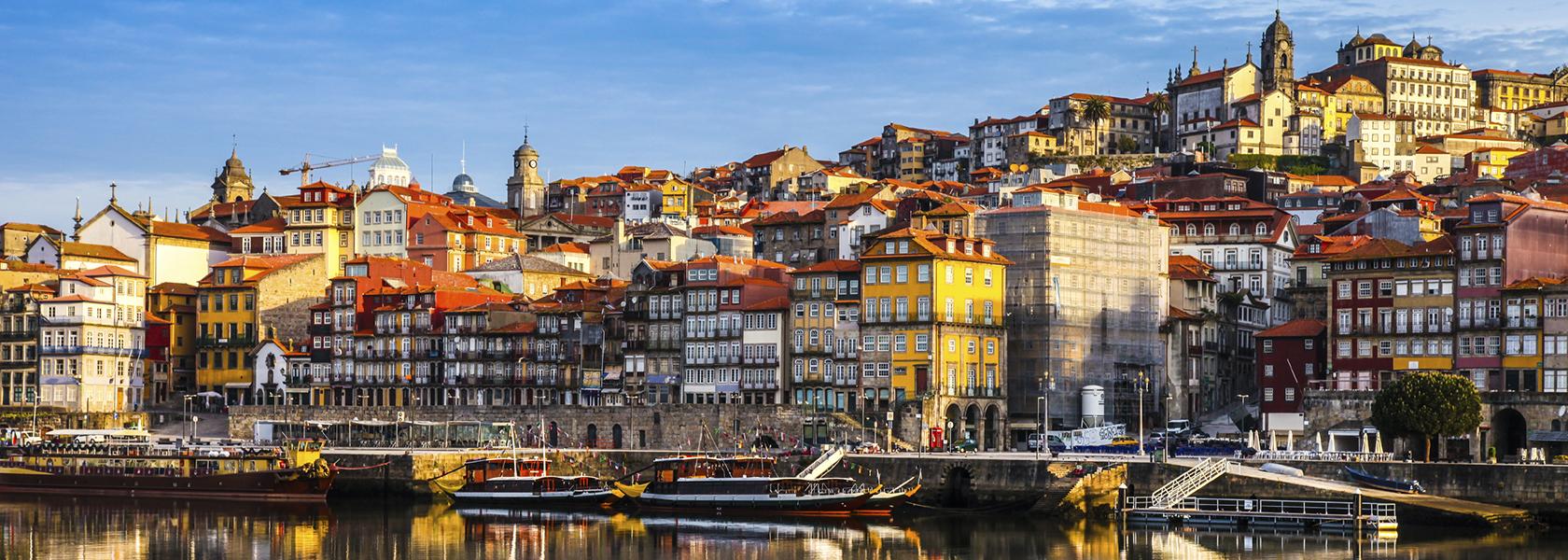TOP 10 EXPERIENCES
For Portugal
9. Lose yourself in Porto's historic centre
“Quem vem e atravessa o rio/Junto à Serra do Pilar/ Vê um velho casario/Que se estende até ao mar.” (If you come and cross the river/ By the Serra do Pilar hill/ You see a jumble of old houses/ Stretching to the sea.”
Carlos Tê wrote the words of “Porto Sentido”, and Rui Veloso, seen by many as the father of Portuguese rock, performed a song that captures something of the soul of Porto. The fact is that the vista that opens out before you on arrival in the “Antiga, Mui Nobre, Sempre Leal e Invicta” (Ancient, Very Noble, Ever Loyal and Undefeated) – a title that it has borne since the creation of the Condado Portucalense, the medieval county that was to give rise to Portugal after centuries of conquest – is possibly one of the prettiest anywhere, whether you come by car or by train.
After crossing the Serra do Pilar hills, it is amazing to come into the fabulous valley, its steep slopes packed with buildings – some modern, others of medieval origin. From the twin decks of the bridge, the River Douro looks calm and resplendent and the “jumble of old houses” welcomes us to its broad squares, narrow streets and wonderful Baroque churches. The city is still known today as the Invicta – undefeated – and provides the “Portu” in Portugal. Its inhabitants are renowned for their warmth and pride in their city. They are also known as rebels, challenging the powers-that-be at various moments in history – the Moors, taxes, the invading Napoleonic forces and later absolutism.
This is Portugal’s second city and, rivalries aside, Lisbon and Porto are like night and day. The former had to be rebuilt after an earthquake along more modern lines, mixed with Moorish traces, while the latter invokes a feeling of permanence, with its vast surviving built heritage from different eras, which while unique at the same time recalls other European cities such as Prague.
The city’s historic centre, in the riverside Ribeira district, is a UNESCO World Heritage site. Before diving into this romantic area, you might climb up to the Jardim do Morro garden in Gaia, on the south side of the river, or take the upper deck of the iconic Ponte Dom Luís bridge for a fabulous panoramic view. On walking down into Ribeira, you will be struck by the contrasts between the narrow, dark streets and the beams of brilliant light that hit you as you turn each corner. The colourful houses also impress, standing side by side with Beaux-Arts buildings and the medieval remnants that can still be found here and there. The Palácio da Bolsa, the former stock exchange, for example, stands across from the robust reddish iron structure of the imposing Hard Club, the former Mercado Ferreira Borges market hall.
However, despite this preservation of its architectural heritage, the Porto of today is no longer the city portrayed by the late Manoel de Oliveira in his films. It is no longer just the country’s business capital, whose industry was given a boost by the wine trade, nor just a magnet for lovers of port. Today the Ribeira district, although thinly populated, draws many visitors to its galleries, cafés and bars. With countless cultural venues dotted around town, from small to large, popular to underground, Porto is teeming with places to appreciate the widest range of music, visual arts or theatre. It is a city of passions that always sparks a desire to return some day. As the song “Porto Sentido” puts it: “E é sempre a primeira vez/ Em cada regresso a casa”. (And it’s always the first time/ With every return home.)

